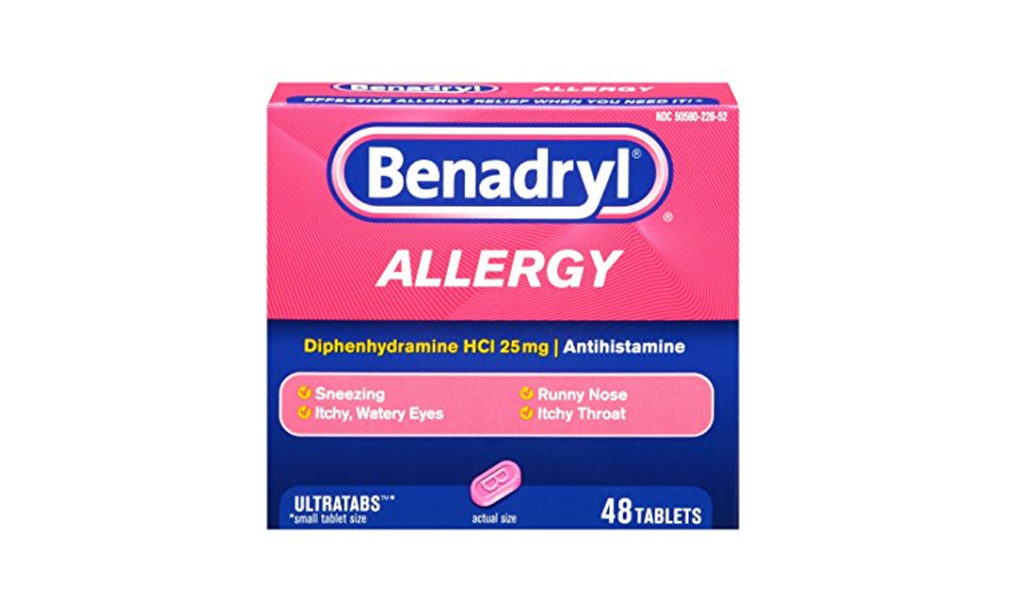
Don’t take it, kids. And don’t let your parents give it to you, either.
Move over Tide Pod Challenge. Now there’s a new challenge on social media, and at least one death has been attributed to it. The “Benadryl Challenge” has been linked to the death of an Oklahoma teen:
Last week, a 15-year-old girl reportedly died from an overdose of Benadryl. Described by those who cared about her as an otherwise happy and faith-driven teen, she was not one to experiment with drugs. However, she fell victim to what’s been called the Benadryl Challenge on TikTok. The challenge is to trip out, or hallucinate, after taking a dozen or more doses of the pill.
This isn’t the first case. Three cases were reported in this past July in Texas:
Three teens were treated at Cook Children’s in May after overdosing on the common allergy medicine diphenhydramine aka Benadryl. Each of these patients said they got the idea from videos on TikTok that claimed users could get high and hallucinate if they took a dozen or more of the allergy pills.
The active ingredient in Benadryl is particularly toxic, and arguably wouldn’t be approved today. And it’s not the kind of “high” that anyone should want. So why is it still being marketed as an allergy treatment?
What is Benadryl?
Benadryl is the most popular brand name of the antihistamine diphenhydramine, which has been around since the 1940s and is used to treat seasonal allergies, and allergic reactions like hives. Because it’s been around so long, and newer antihistamines have followed, it’s now called a “first generation” antihistamine. The first generation antihistamines may be what you took for allergies if you grew up in the seventies or eighties. Today we have non-sedating antihistamines that don’t leave us in a fog. Histamine is a chemical that can be released by cells causing allergic symptoms as well as skin swelling and rash. Antihistamines like diphenhydramine block H1 (histamine) receptors, which are located throughout the body. Because of their mechanism of action, they don’t work as effectively once you already have a histamine release, but they can reduce the severity of a reaction if taken before it occurs. Because it can cause significant drowsiness, diphenhydramine is also the active ingredient in some over-the-counter drugs to help sleep (e.g., Nytol), where the sedative effects are marketed as the desirable effect, and not a side effect.
Diphenydramine is not a great antihistamine, and its nasty side effect profile has led some organizations to call on regulators to make it less accessible to consumers. In 2019 the Canadian Society of Allergy and Clinical Immunology published a position statement warning against the use of Benadryl as the first choice of antihistamine:
First-generation AHs have been used for the treatment of allergic disease for over 70 years. However, common and serious adverse effects associated with these medications have been reported. First-generation AHs are in the process of being restricted as new evidence of harm, contraindications and dose limitations become apparent. Older AHs have not passed current safety or efficacy standards, and should not be used in routine circumstances for allergic disease.
Even before any TikTok challenge, the side effect profile of the “first generation” antihistamines like diphenhydramine has been well known. These drugs are termed “poorly selective” as they can bind to many different cell receptors in the body, giving the drug a nasty and toxic side effect profile. These drugs also cross the “blood brain barrier” meaning that they can cause central nervous system impairments that are progressive with dose. The impairment from taking just 50mg of Benadryl was found to exceed that of a 0.1% blood alcohol concentration. Overdose, because of the effect on other receptors in the body and brain, can cause fever, flushing, increased heart rate, low blood pressure, and coma. Accidental poisonings in children are not uncommon and some instances have resulted in death. In large doses, the “first generation” antihistamines may affect heart rhythm and conduction, potentially leading to palpitations, seizures and even sudden cardiac death.
Challenge or not, there are good reasons to stop buying Benadryl
Since drugs like Benadryl have been marketed, there have been a number of antihistamines that are just as effective as Benadryl without the substantial side effect profile. So called “second generation” antihistamines were revolutionary when launched, and drugs like Claritin and Reactine offered allergy relief without the side effects of drugs like Benadryl. Now there are “third generation” antihistamines that are arguably better by every measure than drugs like Benadryl: they are safer, they have a faster onset of action, they are more effective, and a dose lasts longer. When used to treat allergies, there’s little need to even keep Benadryl on the market (or in your first aid kit) today, given newer antihistamines are equally or more effective and lack the toxicity of the older drugs. Allergy treatment guidelines no longer recommend these older antihistamines. TikTok or not, there’s no reason to take Benadryl anymore.

